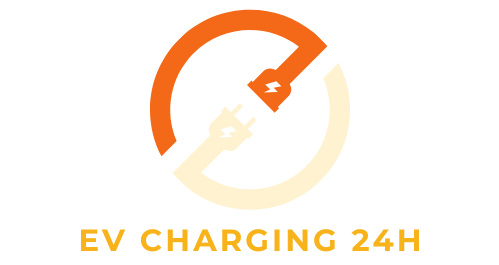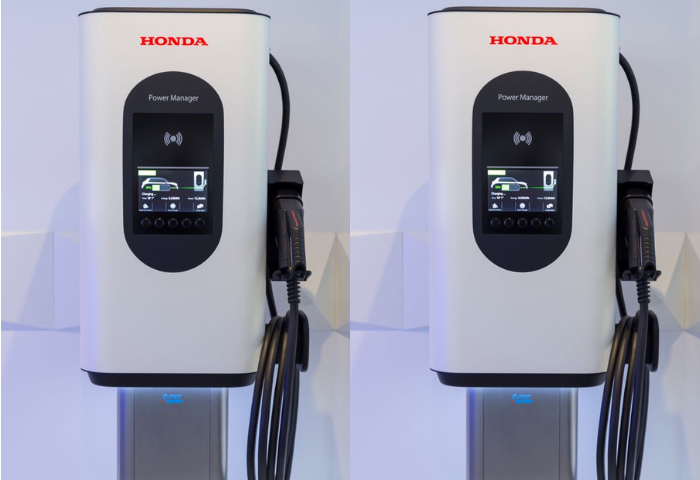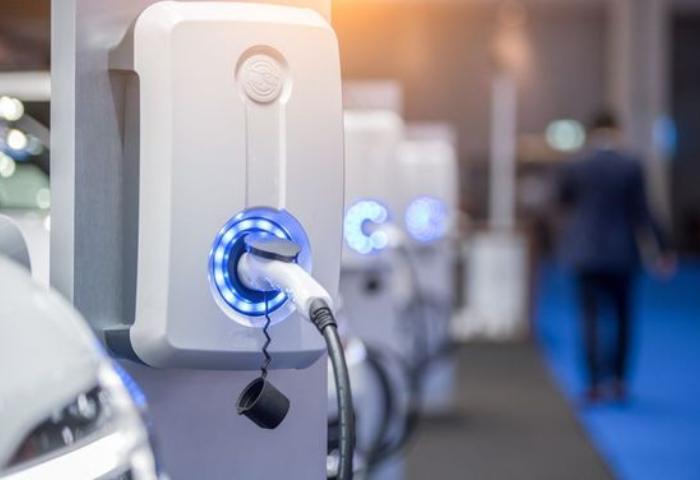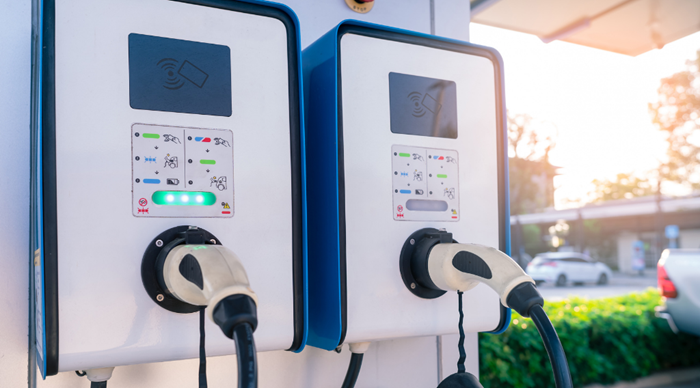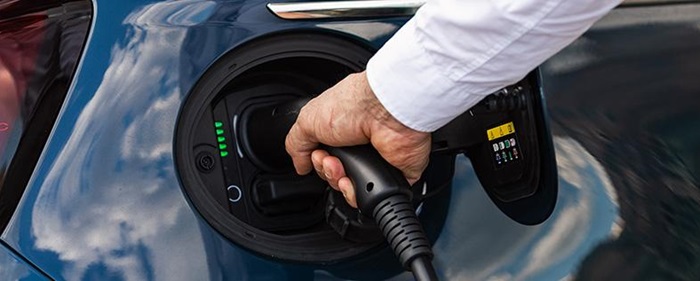How fast does a level 1 charger charge an EV?
Electric vehicles (EVs) are gaining traction, but questions about charging times linger. Many homes come equipped with a standard outlet, which can be used for charging through a Level 1 EV charger. But how fast does a Level 1 charger actually juice up your EV?
Understanding Level 1 Charging Speed
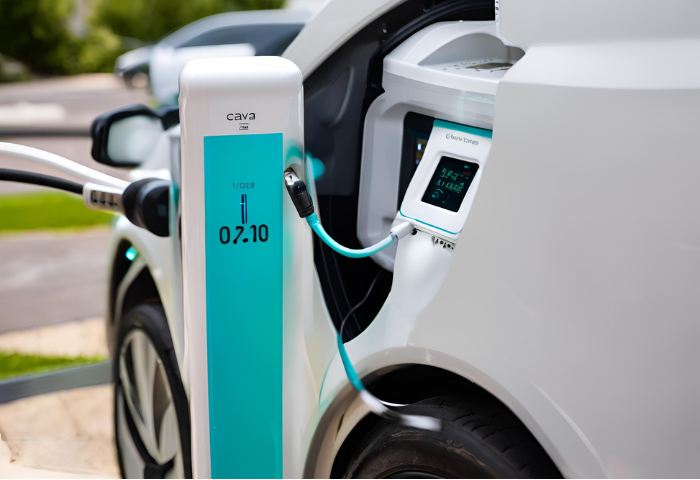
What is a Level 1 charger and how does it work?
A Level 1 charger is the most basic type of electric vehicle (EV) charger, commonly used for home charging. It operates on a standard 120-volt household outlet. Level 1 chargers provide a slow charging rate, typically around 2–5 miles of range per hour of charging, depending on the vehicle.
The Level 1 charger typically consists of a plug that connects to the standard electrical outlet on one end and a connector compatible with the EV on the other end.
It works by converting the alternating current (AC) from the outlet into direct current (DC), which is suitable for charging the EV’s battery. Due to their slow charging rate, Level 1 chargers are best suited for overnight charging or topping up a vehicle’s battery throughout the day when a faster charging option is not available.
How fast does a Level 1 charger charge an electric vehicle?
While Level 1 chargers offer the convenience of using a standard household outlet, their charging speed is the slowest option for electric vehicles (EVs). Here’s a breakdown of what to expect:
Charging Rate:
- A typical Level 1 charger delivers around 1.3 kW to 2.4 kW of power.
- This translates to roughly 3 to 5 miles of range per hour of charging.
Completely emptying your EV’s battery and relying solely on a Level 1 charger for a full recharge can take a significant amount of time, ranging from 11 to 20 hours depending on the size of your EV battery.
When is a Level 1 charger suitable?
- Overnight Charging: If you primarily drive short distances and can plug your car in overnight, a Level 1 charger might be sufficient for your daily needs.
- Supplemental Charging: It can be a handy option for topping off your battery if you have access to a standard outlet while parked for extended periods (e.g., at the workplace).
Factors Affecting Charging Speed with Level 1 Chargers
Level 1 chargers are the most basic type of electric vehicle (EV) charger, typically using a standard 120-volt AC household outlet. Several factors influence the charging speed when using a Level 1 charger:
Battery Capacity: The size of the EV’s battery pack determines how much energy it can store. A larger battery will take longer to charge compared to a smaller one, all else being equal.
Charger Efficiency: The efficiency of the charger itself plays a role. Some chargers are more efficient at converting AC power to DC power for the battery, which can affect charging speed.
Charger Power Rating: Level 1 chargers typically provide low charging power, usually around 1.4 to 1.9 kW. This is significantly lower compared to higher-level chargers like Level 2 or DC fast chargers, which can provide charging power up to 11 kW or more.
State of Charge (SoC): The current state of charge of the battery also affects charging speed. Generally, EVs charge faster when they have a lower SoC and slow down as they approach full charge.
Battery Management System (BMS): The BMS of the EV regulates the charging process to ensure safety and optimize battery health. It may adjust the charging rate based on factors such as temperature, voltage, and current.
Temperature: Extreme temperatures, both hot and cold, can affect charging speed. Charging may slow down in very cold temperatures due to the increased resistance in the battery, while in hot temperatures, the charging rate may be limited to prevent overheating.
Voltage and Amperage of the Power Outlet: While Level 1 chargers typically use standard 120-volt outlets, variations in voltage and amperage can affect charging speed. For example, some outlets may provide a slightly higher voltage, which can result in faster charging.
Cable Length and Quality: The length and quality of the charging cable can also impact charging speed. Longer cables or cables with higher resistance may result in slower charging rates.
Other Electrical Loads: Other electrical loads in the home may have an impact on charging from a Level 1 charger. If other high-power appliances are running simultaneously, it can reduce the available power for charging the EV.
Software Limitations: Some EVs have software limitations that may restrict charging speed, especially if the manufacturer prioritizes battery longevity over rapid charging.
Charging Time Estimation for Level 1 Chargers
Estimating charging time with a Level 1 charger involves a simple calculation based on the battery capacity of the electric vehicle (EV) and the charging power provided by the charger. Here’s how you can estimate it:
Determine Battery Capacity: Find out the capacity of the EV’s battery in kilowatt-hours (kWh). The manufacturer typically provides this information, which can also be found in the vehicle’s documentation.
Calculate Charging Time: Divide the battery capacity (in kWh) by the charging power of the Level 1 charger (in kilowatts, kW). This will give you an estimate of the time it takes to fully charge the battery from empty to full. Charging Time (hours) = Battery Capacity (kWh) / Charging Power (kW)
For example, let’s say you have an EV with a battery capacity of 60 kWh and you’re using a Level 1 charger with a charging power of 1.4 kW.
Charging Time = 60 kWh / 1.4 kW ≈ 42.86 hours
So, it would take approximately 42.86 hours to fully charge the EV battery from empty to full using a Level 1 charger with 1.4 kW charging power.
Comparing Level 1 Charging Speed

Level 1 vs. Level 2 Chargers: Charging Speed Showdown
| Factor | Level 1 Charger | Level 2 charger |
| Charging Power | Typically around 1.4–1.9 kW | Typically around 3.3–11 kW |
| Typical Charging Time* | 8–20 hours (for a full charge from empty) | 4–8 hours (for a full charge from empty) |
| Suitable Locations | Residential settings, standard 120V outlets | Residential, workplaces, and public charging stations |
| Cost | Generally less expensive to install and operate. | More expensive to install due to higher power requirements, but costs can vary depending on installation factors. |
| Convenience | Slower charging speed, best for overnight charging | Faster charging speed, suitable for daily use and longer trips |
| Compatibility | Compatible with all electric vehicles (EVs). | Compatible with most EVs, some may require an adapter or specific plug. |
*Charging times are approximate and can vary depending on factors such as battery capacity, charger efficiency, temperature, and battery state of charge.
Choosing the Right Charger for Home Charging
Choosing the right charger for home charging depends on several factors, including your electric vehicle (EV) model, your daily driving habits, available electrical infrastructure, and budget. Here’s a step-by-step guide to help you make the decision:
Understand Your EV’s Charging Capabilities: Different EV models have different charging capabilities. Some EVs can only accept Level 1 charging, while others are compatible with Level 2 chargers or even DC fast chargers. Check your EV’s manual or specifications to understand its charging requirements.
Assess Your Daily Driving Needs: Consider your typical daily driving distance and charging patterns. If you have a short commute and can charge overnight, a Level 1 charger may suffice. However, if you frequently drive long distances or need to recharge quickly, a Level 2 charger may be more suitable.
Evaluate Available Electrical Infrastructure: Determine if your home has access to a standard 120-volt outlet for Level 1 charging or if you can install a dedicated 240-volt circuit for a Level 2 charger. Assess the electrical capacity of your home and consult with an electrician to ensure it can support the charging solution you choose.
Consider Charging Speed and Convenience: Level 2 chargers provide faster charging compared to Level 1 chargers, which can be advantageous if you need to charge your EV more quickly. Additionally, Level 2 chargers are more convenient for daily charging, as they can replenish more miles of range per hour.
Think About Future-Proofing: If you plan to keep your EV for several years, consider investing in a Level 2 charger, even if you currently only need Level 1 charging. It provides flexibility for future EV models with higher charging capabilities and can enhance the resale value of your home.
Budget Considerations: Level 1 chargers are generally more affordable to purchase and install compared to Level 2 chargers, which require additional electrical work. Factor in the initial cost of the charger, installation expenses, and potential long-term savings from faster charging and energy management features.
Research Charger Brands and Features: Look into different charger brands and models to find one that meets your requirements and offers additional features such as Wi-Fi connectivity, smartphone apps for monitoring, scheduling charging, and energy management.
Check for Incentives and Rebates: Some utility companies, local governments, and EV manufacturers offer incentives or rebates for installing EV chargers at home. Take advantage of these programs to offset the cost of purchasing and installing a charger.
Alternatives for Faster Charging (Optional)
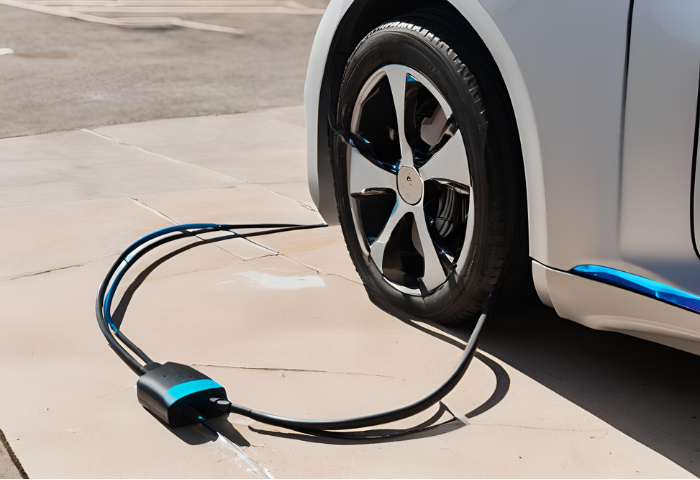
Exploring Portable Level 1 Charger Options
When exploring portable Level 1 charger options, there are a few key factors to consider to ensure you find the right one for your needs:
Compatibility: Ensure that the portable Level 1 charger is compatible with your electric vehicle (EV) model. Most Level 1 chargers are compatible with all EVs that use a standard J1772 connector, but it’s always a good idea to double-check compatibility with your specific vehicle.
Charging Power: Portable Level 1 chargers typically operate at standard 120-volt outlets and provide charging power ranging from around 1.2 kW to 1.9 kW. Consider the charging power and how it aligns with your charging needs. Keep in mind that Level 1 chargers are slower compared to Level 2 chargers, so if you require faster charging, you may need to explore Level 2 options.
Portability: Look for a charger that is lightweight, compact, and easy to transport. Ideally, it should come with a carrying case or storage bag for convenience. Portability is especially important if you plan to take the charger with you on road trips or while traveling.
Durability: Choose a portable Level 1 charger that is durable and built to withstand various weather conditions if you plan to use it outdoors. Look for features such as weatherproofing, robust construction, and high-quality materials that ensure longevity and reliability.
Safety Features: Ensure that the charger has built-in safety features to protect against overcharging, overheating, short circuits, and other potential hazards. Look for certifications such as UL certification, which indicates that the charger meets safety standards.
Cable Length: Consider the length of the charging cable, as it can affect convenience and accessibility when charging your EV. Opt for a charger with a longer cable length if you need flexibility in reaching the charging port of your vehicle.
User-Friendly Features: Look for user-friendly features such as LED indicators, intuitive controls, and easy-to-read displays that make it simple to monitor charging status and operation.
Warranty and Customer Support: Choose a portable Level 1 charger from a reputable manufacturer that offers a warranty and reliable customer support. A warranty provides peace of mind and protection against any potential defects or issues with the charger.
Understanding Fast-Charging Alternatives for EVs
Understanding fast-charging alternatives for electric vehicles (EVs) involves knowing the different types of fast chargers available and how they compare in terms of charging speed, infrastructure requirements, and compatibility. Here are the main fast-charging options:
Level 2 Chargers
While not as fast as DC fast chargers, Level 2 chargers are faster than Level 1 chargers and are commonly found in residential, workplace, and public charging locations.
They operate at higher voltages (typically 240 volts) and provide charging speeds ranging from 3.3 kW to 11 kW, depending on the charger’s power rating and the EV’s onboard charger capacity. Level 2 chargers use the same J1772 connector as Level 1 chargers but require a dedicated 240-volt circuit.
DC Fast Chargers (DCFC)
DC fast chargers provide the fastest charging speeds available for EVs and are commonly deployed along highways, at public charging stations, and in commercial areas.
These chargers bypass the vehicle’s onboard charger and deliver DC (direct current) power directly to the EV’s battery, allowing for much faster charging rates.
DC fast chargers come in various formats, including CHAdeMO, CCS (Combined Charging System), and Tesla Superchargers. Charging speeds can range from 50 kW to over 350 kW, depending on the charger’s power rating and the EV’s compatibility.
Tesla Superchargers
Tesla’s proprietary Supercharger network is designed specifically for Tesla vehicles and provides high-speed charging for Tesla EVs only. Superchargers deliver DC power directly to the vehicle’s battery, allowing for rapid charging speeds. Tesla Superchargers have power ratings ranging from 72 kW to 250 kW, with some newer versions supporting even higher power levels. They are primarily located along major highways and travel routes, enabling long-distance travel for Tesla owners.
High-Power Charging (HPC)
High-power charging refers to ultra-fast charging systems capable of delivering charging speeds exceeding 350 kW.
These chargers are still relatively rare but are expected to become more prevalent as EV technology advances and automakers introduce vehicles with larger batteries and higher charging capacities.
High-power charging networks such as Ionity in Europe and Electrify America in the United States are deploying HPC infrastructure to support the next generation of EVs.
FAQs: Level 1 Charger Charging Speed
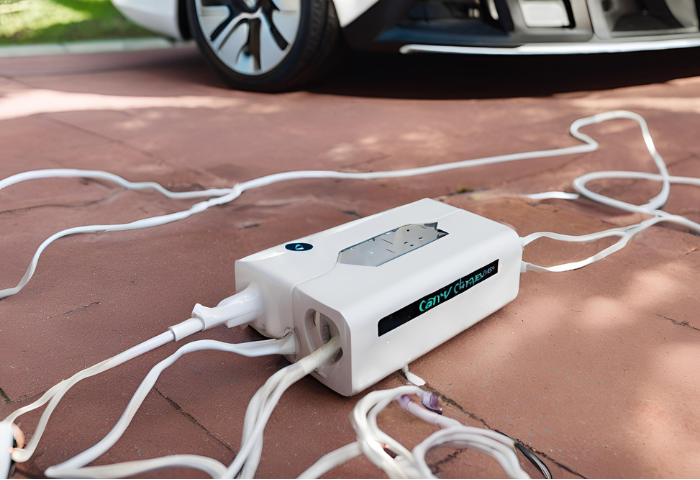
Definition of a Level 1 Charger
A Level 1 charger, also known as a trickle charger or slow charger, is the most basic type of electric vehicle (EV) charging equipment.
It typically operates using a standard 120-volt AC household outlet, the same outlet used for common household appliances. Level 1 chargers are characterized by their low charging power, typically ranging from around 1.2 kW to 1.9 kW.
Key features of a Level 1 charger include:
Low Charging Power: Level 1 chargers provide relatively slow charging speeds compared to higher-level chargers. The charging power is limited by the standard 120-volt household outlet, which results in longer charging times.
Ease of Use: Level 1 chargers are easy to use and require no special installation or electrical work. They can be plugged into any standard 120-volt outlet, making them convenient for residential charging.
Compatibility: Level 1 chargers are compatible with all electric vehicles (EVs) and plug-in hybrid electric vehicles (PHEVs) that use a standard J1772 connector, which is the most common charging connector in North America.
Cost-effective: Level 1 chargers are typically the most affordable charging option, both in terms of equipment cost and installation. Since they use existing household outlets, there is no need for additional infrastructure or electrical upgrades.
Suitability for Overnight Charging: Level 1 chargers are best suited for overnight charging at home, where the slow charging speed is less of a concern. They are ideal for EV owners with short daily commutes or who have access to charging at work or public charging stations for faster charging when needed.
Benefits of Using a Level 1 Charger
Using a Level 1 charger for electric vehicle (EV) charging offers several benefits, particularly for residential charging needs:
Convenience: Level 1 chargers can be plugged into any standard 120-volt household outlet, making them incredibly convenient for residential use. There’s no need for special installation or electrical work, and you can charge your EV wherever there’s an available outlet, whether it’s in your garage, driveway, or parking space.
Cost-effective: Level 1 chargers are typically the most affordable option for EV charging, both in terms of equipment cost and installation. Since they use existing household outlets, there’s no need for expensive infrastructure upgrades or additional electrical work.
Universal Compatibility: Level 1 chargers are compatible with all electric vehicles (EVs) and plug-in hybrid electric vehicles (PHEVs) that use a standard J1772 connector. This universal compatibility means you can use the same charger for different EV models, making it convenient if you have multiple EVs or plan to switch vehicles in the future.
Suitability for Overnight Charging: Level 1 chargers are best suited for overnight charging, particularly for EV owners with short daily commutes. While they may not offer the fastest charging speeds, they provide ample time to recharge your EV overnight, ensuring it’s ready to go in the morning. This is especially beneficial if you have access to lower electricity rates during off-peak hours.
Low Energy Costs: Level 1 chargers typically draw less power compared to higher-level chargers, resulting in lower energy costs for charging your EV. Since they use standard household outlets, they operate at a lower voltage and amperage, which can help reduce electricity consumption and minimize utility bills.
Flexibility: Level 1 chargers offer flexibility in charging locations, allowing you to charge your EV wherever there’s a standard household outlet. This makes them ideal for homeowners, renters, or EV owners who don’t have access to dedicated charging infrastructure or EV-specific parking spaces.
Typical charging times for different EV models (optional)
Certainly, here are some typical charging times for popular electric vehicle (EV) models when using a Level 1 charger:
| EV Model | Battery Size (kWh) | Typical Charging Time (Fast Charging) |
|---|---|---|
| Tesla Model S | 75 – 100 | 30 – 40 minutes |
| Tesla Model 3 | 50 – 75 | 30 – 40 minutes |
| Tesla Model X | 75 – 100 | 30 – 40 minutes |
| Tesla Model Y | 50 – 75 | 30 – 40 minutes |
| Nissan Leaf | 40 – 62 | 30 – 60 minutes |
| Chevrolet Bolt | 60 | 45 – 60 minutes |
| BMW i3 | 42.2 | 30 – 45 minutes |
| Audi e-tron | 95 – 95 | 30 – 45 minutes |
| Hyundai Kona | 64 | 45 – 60 minutes |
| Kia Soul EV | 64 | 45 – 60 minutes |
| Ford Mustang Mach-E | 68 | 45 – 60 minutes |
Optimizing charging time with a Level 1 charger
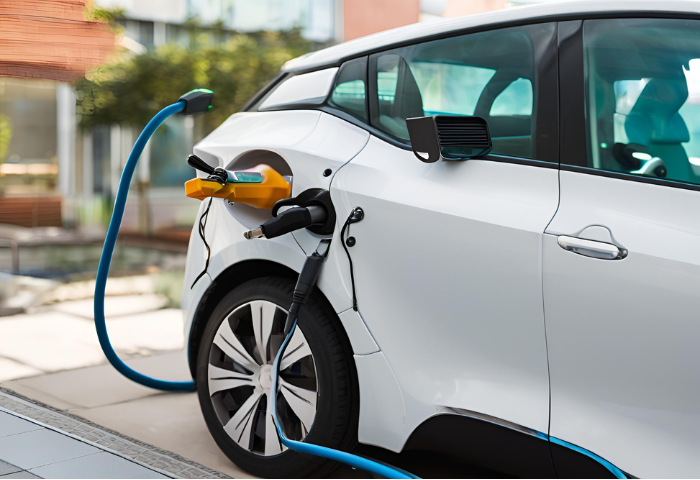
Optimizing charging time with a Level 1 charger involves several strategies to make the most efficient use of the charging power available. Here are some tips to help you optimize your charging time:
| EV Model | Battery Capacity | Charging Time (Level 1) |
| Tesla Model S | 75 kWh | Approx. 7-8 hours |
| Nissan Leaf | 40 kWh | Approx. 8–10 hours |
| Chevrolet Bolt EV | 66 kWh | Approx. 10–12 hours |
| Hyundai Kona Electric | 64 kWh | Approx. 10–12 hours |
| Kia Soul EV | 64 kWh | Approx. 10–12 hours |
| BMW i3 | 42.2 kWh | Approx. 8–10 hours |
| Volkswagen ID.4 | 77 kWh | Approx. 10–12 hours |
| Ford Mustang Mach-E | 68 kWh | Approx. 10–12 hours |
Charge Overnight: Since Level 1 chargers provide relatively slow charging speeds, it’s best to charge your electric vehicle (EV) overnight when it’s parked and not in use. This allows you to take advantage of the longer charging duration and ensure that your EV is fully charged and ready to go in the morning.
Monitor Battery State of Charge (SoC): Keep track of your EV’s battery state of charge to avoid unnecessary charging sessions. If you only need a partial charge to cover your daily driving needs, you can stop charging once the desired SoC is reached, saving time and energy.
Preconditioning: Some EVs allow you to precondition the cabin temperature while the vehicle is still plugged in and charging. By preconditioning the cabin before driving, you can reduce the need for heating or cooling while on the road, which can help conserve battery energy and optimize charging time.
Avoid Peak Electricity Hours: If possible, schedule your charging sessions during off-peak hours when electricity rates are lower. This not only helps save money on energy costs but also reduces strain on the electrical grid during peak demand periods.
Minimize Vampire Drain: Some EVs may experience “vampire drain,” where small amounts of energy are consumed even when the vehicle is not in use. To minimize vampire drain and maximize charging efficiency, consider keeping your EV plugged in when parked for extended periods, especially in cold weather or when using energy-intensive features like remote climate control.
Optimize Charging Location: Position your EV close to the charging outlet to minimize cable length and reduce voltage drop, which can affect charging efficiency. Ensure that the charging outlet is not shared with other high-power appliances that may compete for electricity during charging.
Maintain Battery Health: Follow recommended battery maintenance practices to prolong battery life and optimize charging efficiency. This includes avoiding frequent deep discharges, minimizing exposure to extreme temperatures, and avoiding prolonged periods of high or low SoC.
Suitability of Level 1 charging for different EV owners
Level 1 charging can be suitable for a wide range of electric vehicle (EV) owners, depending on their driving habits, charging needs, and access to alternative charging options. Here’s how Level 1 charging may be suitable for different types of EV owners:
Residential EV Owners with Short Daily Commutes: For EV owners who have short daily commutes and predictable driving patterns, Level 1 charging can be perfectly suitable. Since Level 1 chargers are typically slower, they are ideal for overnight charging, ensuring that the vehicle is fully charged and ready for daily use.
Homeowners and Renters with Access to a Standard Outlet: Level 1 charging is convenient for homeowners and renters who have access to a standard 120-volt household outlet. Since no special installation or electrical work is required, it’s an accessible and cost-effective charging solution for residential settings.
EV Owners with Limited Charging Infrastructure: In areas where access to Level 2 chargers or public charging stations is limited, Level 1 charging can provide a reliable and convenient charging option. Even if higher-speed chargers are available nearby, Level 1 charging ensures that EV owners always have a backup charging solution at home.
Secondary Vehicle Owners or Occasional EV Users: Level 1 charging may be suitable for owners of secondary EVs or occasional EV users who don’t require frequent or rapid charging. These EV owners may use their vehicles for short trips or as secondary transportation options, making Level 1 charging sufficient for their needs.
EV Owners with Alternative Charging Options for Longer Trips: For EV owners who occasionally need to travel longer distances, Level 1 charging can complement higher-speed charging options available at workplaces, public charging stations, or along major travel routes. While Level 1 charging may not be practical for rapid recharging during long trips, it provides a convenient option for overnight charging at home.
Cost-conscious EV Owners: Level 1 charging is typically the most affordable option for EV charging, both in terms of equipment cost and installation. For cost-conscious EV owners who want to minimize upfront expenses and energy costs, Level 1 charging offers a budget-friendly solution for residential charging needs.
Alternatives to Level 1 charging for faster needs
If Level 1 charging doesn’t meet your needs for faster charging, there are several alternatives to consider:
Level 2 Charging: Level 2 chargers operate at higher voltages (typically 240 volts) and provide faster charging speeds compared to Level 1 chargers. They are commonly found in residential, workplace, and public charging locations. Level 2 chargers can fully charge an electric vehicle (EV) in a fraction of the time it takes with a Level 1 charger. They are ideal for EV owners who need faster charging at home or want to top up their battery more quickly while out and about.
DC Fast Charging (DCFC): DC fast chargers provide the fastest charging speeds available for EVs and are commonly deployed along highways, at public charging stations, and in commercial areas. These chargers bypass the vehicle’s onboard charger and deliver DC power directly to the EV’s battery, allowing for much faster charging rates. DC fast chargers can charge an EV to 80% capacity in as little as 30 minutes, making them ideal for long-distance travel and quick top-ups while on the road.
Tesla Superchargers: Tesla’s proprietary Supercharger network is designed specifically for Tesla vehicles and provides high-speed charging for Tesla EVs only. Superchargers deliver DC power directly to the vehicle’s battery, allowing for rapid charging speeds. Tesla Superchargers have power ratings ranging from 72 kW to 250 kW, with some newer versions supporting even higher power levels. They are primarily located along major highways and travel routes, enabling long-distance travel for Tesla owners.
High-Power Charging (HPC): High-power charging refers to ultra-fast charging systems capable of delivering charging speeds exceeding 350 kW. These chargers are still relatively rare but are expected to become more prevalent as EV technology advances and automakers introduce vehicles with larger batteries and higher charging capacities. High-power charging networks such as Ionity in Europe and Electrify America in the United States are deploying HPC infrastructure to support the next generation of EVs.
Tips for efficient Level 1 charging
Efficient Level 1 charging involves maximizing the charging power available and making the most of the charging time. Here are some tips to help you charge your electric vehicle (EV) efficiently with a Level 1 charger:
Charge Overnight: Since Level 1 chargers provide relatively slow charging speeds, it’s best to charge your EV overnight when it’s parked and not in use. This allows you to take advantage of the longer charging duration and ensure that your EV is fully charged and ready to go in the morning.
Monitor Battery State of Charge (SoC): Keep track of your EV’s battery state of charge to avoid unnecessary charging sessions. If you only need a partial charge to cover your daily driving needs, you can stop charging once the desired SoC is reached, saving time and energy.
Preconditioning: Some EVs allow you to precondition the cabin temperature while the vehicle is still plugged in and charging. By preconditioning the cabin before driving, you can reduce the need for heating or cooling while on the road, which can help conserve battery energy and optimize charging time.
Avoid Peak Electricity Hours: If possible, schedule your charging sessions during off-peak hours when electricity rates are lower. This not only helps save money on energy costs but also reduces strain on the electrical grid during peak demand periods.
Minimize Vampire Drain: Some EVs may experience “vampire drain,” where small amounts of energy are consumed even when the vehicle is not in use. To minimize vampire drain and maximize charging efficiency, consider keeping your EV plugged in when parked for extended periods, especially in cold weather or when using energy-intensive features like remote climate control.
Optimize Charging Location: Position your EV close to the charging outlet to minimize cable length and reduce voltage drop, which can affect charging efficiency. Ensure that the charging outlet is not shared with other high-power appliances that may compete for electricity during charging.
Maintain Battery Health: Follow recommended battery maintenance practices to prolong battery life and optimize charging efficiency. This includes avoiding frequent deep discharges, minimizing exposure to extreme temperatures, and avoiding prolonged periods of high or low SoC.
Monitor Charging Progress: Keep an eye on the charging progress through your EV’s dashboard or mobile app, if available. This allows you to track charging status, estimate remaining charging time, and adjust charging settings as needed.
While Level 1 charging may not offer the fastest charging speeds, it provides a convenient and accessible option for residential EV charging needs, particularly for EV owners with modest driving distances and access to alternative charging options for longer trips.
Level 1 chargers are often used for overnight charging, ensuring that the EV is fully charged and ready for daily use in the morning.
Level 1 charging is best suited for EV owners who prioritize convenience and affordability over charging speed, as it provides a practical solution for residential charging needs while offering flexibility and ease of use.

Henry Michael is a leading expert in EV charging station research, specializing in innovative solutions for electric vehicle infrastructure. With a passion for sustainability and technological advancement, he is dedicated to advancing the accessibility and efficiency of EV charging worldwide.
